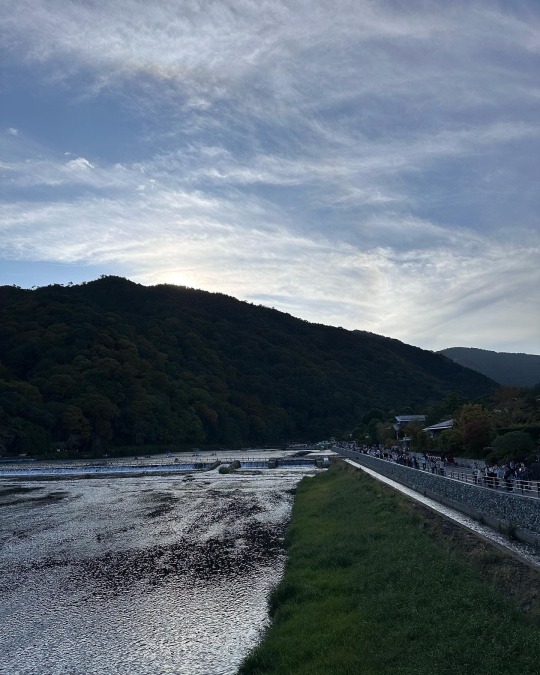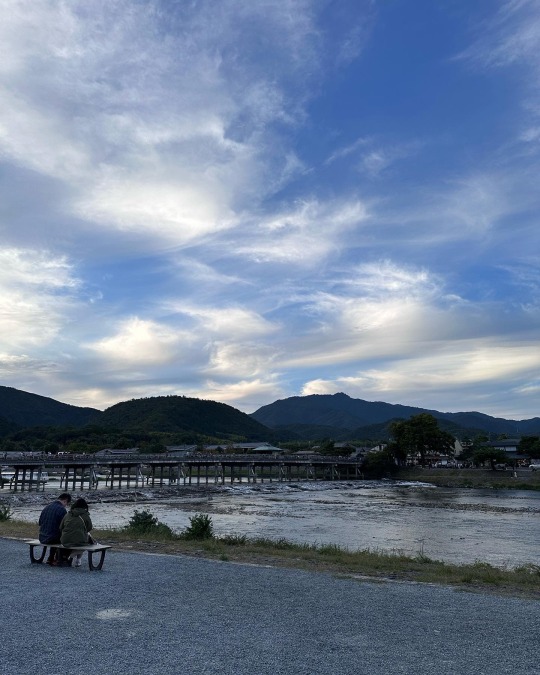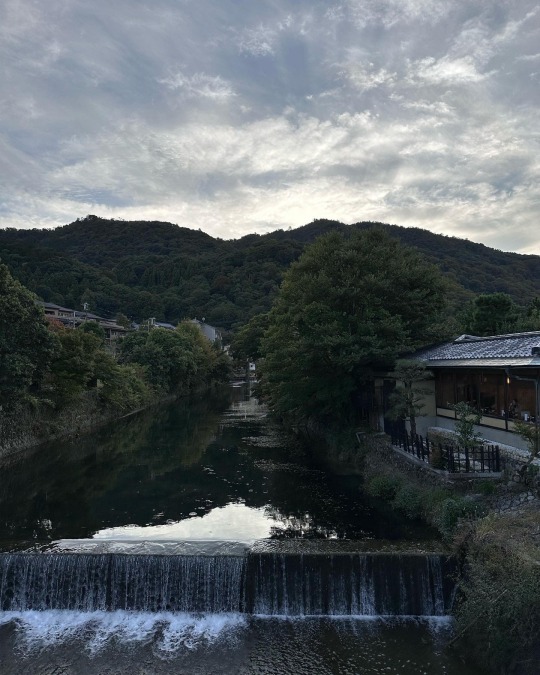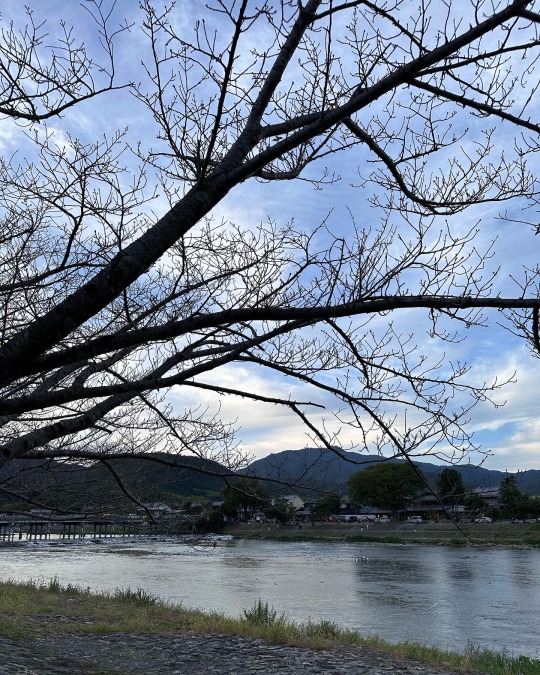#kastura river
Text




My Japan Trip : Peaceful Evening at Arashiyama
#my japan trip#arashiyama#kastura river#kyoto#kansai#japan#japan trip#japan travel#japan photography
16 notes
·
View notes
Link
Haripurdhar is an unassuming community in the Sirmour District of Himachal Pradesh in India. This spot gets its name from a mountain called Haripur Dhar. Haripurdhar is one of the Offbeat destinations near Delhi. Delicious cotton mists will invite you to this simple town encompassed by rich green magnificence. The town is located on a high edge watching over a profound valley. There are many spots of normal excellence and strict significance in the encompassing district of Haripurdhar.
History
Haripurdhar was known as ‘Dung Bhangayani’ before. Earlier, this was the mid-year capital of the Sirmour. Located on a peak of Haripur slope this place is like a quiet sentinel, there you can find a post named “KILLA” that was based on this range by the leaders of early Sirmour State. It was essentially intended to monitor the state edges with the adjoining Jubbal State as there were standard limit questions between the two states and there was a surprising drive into every other domain. It has fallen into surrender and the part which is as yet bearable is utilized by the Forest Department as a forester’s base camp.
Geography
This place is near Jamta Nahan and lies at 77º 35′ north and 30º 45′ east at a height of 2687 m above mean sea level. Haripurdhar is quite possibly the most excellent town on the Shivalik slopes. It interfaces four sub-districts Sangrah, Ronhat, Kupvi, and Nohradhar to one another by street, language, and culture. It is additionally an outskirts town of Sirmour and Shimla locale.
Environment
Haripurdhar has a lovely environment during summer and cold during winter. In the colder time of year, there is heavy snowfall in the Haripurdhar district. Travelers partake in this snowfall, that is the reason Haripurdhar has its own significance. One can visit Haripurdhar all around the year.
Spots To Visit In Haripurdhar
Maa Bhangayani Temple – Maa Bhangayani Temple in Haripurdhar is a popular strict spot of Sirmour District. The Temple is located at the edges of Sirmour Tourism and Shimla District on an excellent slope around 7500 feet above ocean level. A higher perspective of the long eastern Himalayas can be seen from Temple grounds. Maa Bhangayani Temple is an integral piece of Tikri-Dasakna Panchayat of Sangrah Development Block and this whole region is covered with snow during the winter season, and it is one of the most beautiful places for tourists. Maa Bhangayani is known as the Goddess of Justice. As indicated by fables Maa Bhangayani was the sister of Lord Shirgul Maharaj who assisted them during battles with Mughal Emperors at Delhi. Individuals of this locale have incredible confidence in Maa Bhangayani and many strict individuals come to ask on events like Sankranthi, Navratri, and each Sunday. This excellent Temple is situated on Sangrah-Chopal/Rajgarh-Chopal street close to Haripurdhar Village.
Spots To Visit Around Haripurdhar
Renuka Ji – Renuka Ji is the most cardinal spot of strict and vacation destination of Sirmour Tourism. It is almost 40 kms from Jamta Nahan and is very much connected with a motorable metalled street. This spot has a famous lake. Drifting in Renuka Lake is an excellent fascination for the sightseers visiting there. This blessed oval molded lake has a band of 2.4 km. Close to this lies the Parshu Ram Lake which dimly looks like a human figure. This famous lake is visited by thousands of travelers consistently on Kartika Ekadashi.
Renuka zoo – Renukaji Mini Zoo is the most seasoned Zoo in Himachal Pradesh, which was, right away, began in 1957 with stray, saved, and abandoned wild creatures from the timberlands.

Churdhar top – Churdhar top is at a height of 3647 meters and is a traveler’s treat from Jamta Nahan and Renuka. The pinnacle offers an incredible perspective on the Gangetic fields, Badrinath toward the north, and the Sutlej River in the south. Likewise seen are the slopes of Chakrata and Shimla from the top.
Habban valley – Habban valley is a town in India that is 70Km from Solan by means of Rajgarh. It is encircled by backwoods of deodar and is roosted in the slopes of Sirmour, a lavish green town that is 6770 ft in elevation. The untamed life in the space incorporates peacocks, tigers, deers, bears, Kakkar, Ghol, and Kastura.
Also Read:- 4 Steps to Pick the Best Hotel in Nahan
Rajgarh – Rajgarh is a town and a Nagar panchayat in Sirmour locale, prevalently known as the Peach valley. Rajgarh has two subdivisions to be specific, Sarahan and Rajgarh, which is additionally an excellent valley of Sirmour. Rajgarh is a position of delectable regular excellence and is around 40 km from Solan. One can trip and camp in the valley.
0 notes
Text
NATURAL WEALTH
Uttar Pradesh is endowed with natural wealth in abundance. This wealth lies hidden below a variety of rocks of different ages found in lofty mountain ranges of the Himalayas in the North and Vindhyan ranges in the South. The diversity of flora and fauna displayed here due to vast area, big and small rivers, varieties of climatic conditions, and different kinds of soil are hard to find elsewhere.
Minerals
The minerals found in Uttar Pradesh include limestone which is found in Guruma-Kanach-Bapuhari in Mirzapur district and Kajrahat in Sonebhadra district; dolomite in Mirzapur, Sonebhadra and Banda, glass-sand in Karchhana of Allahabad district, Karwi in Banda district and Mau district; marble in Mirzapur and Sonebhadra; bauxite in Rajhgewan in Banda district; non-plastic fireclay in Bansi and Makri-Khoh area of Mirzapur district; and Uranium in Lalitpur district. Besides, Barytes and Edalusite are found in the districts of Mirzapur and Sonebhadra. Sand-stone, pebbles, reh, salt punter, maurang, sand and other minor minerals are also found in the State.
Vegetation and Flora
The flora of a region includes all the varieties of plants which grow there.Vegetation is the general effect produced by the growth of some or all these plants. It is not possible here to name all the varieties of plants, which grow in the State. Only the vegetation and important plants that grow in the State are mentioned here. The plains of Uttar Pradesh have been very rich in natural vegetation which has, however, diminished due to wide-ranging needs of the people.
Only a few patches of natural forest are now found scattered here and there in the plains, while such forests are extensively found on a very large scale in sub-mountain and mountain regions which is in Uttranchal now.
Tropical Moist Deciduous Forests
are found in the moist region of Terai. They grow in regions which record 100 to 150 cm. of rainfall annually, have an average temperature between 26 degree to 27 degree centegrade. and have considerable degree of humidity.
Tropical Dry Deciduous Forests
are found in all parts of the plains, and usually in central eastern and western regions. Important trees are Sal, Palas, Amaltas, Bel, fig etc. Neem, Peepal, Sheesham, Mango, Jamun, Babool, Imli (Trmarind) etc. grow along river banks and in other moist regions.
Tropical Thorny Forests are mostly found in south-western parts of the State. Such forests are confined to the areas which have low annual rainfall (50-70 cms), mean annual temperature between 25 degree to 27 degree centegrade and low humidity (less than 47 percent). Widely scattered thorny trees, mainly, Babool, Thorny, legumes and Euphorhias are extensively found here. The diversity of fauna living in water and land in the air are found in the State.
Fauna:
Animals depend on forest not only of food but also for habitat. The diversity of fauna living in water and land in the air are found in the State. Since their list is long, mention shall be made here only of important species mainly found in the State :
Fish -
Mahaser, Hilsa, Saul, Tengan, Parthan, Rasela, Vittal, Rohu, Mirgal,Kata, Labi, Mangur, Cuchia, Eel, Einghi, Mirror Carp, Trout.
Amphibia -
Frog and Toad.
Reptiles -
Bamania, Pit-viper, Lizard, Goh, Cobra,Tortoise, Krait, Dhaman and Crocodile.
Aves -
Cheel, Vulture, Peacock, Nightingale, Pigeon, Parrot, Owl, Nilkanth and Sparrow.
Mammals -
Shrew, Porcupine, Sqirrel, Hare,Mongoose, Cow, Buffalo and Mouse.
Other common species found here
are Tiger, Panther, Snow Leopard, Sambhar, Cheetal, Kastura, Chinkara, Black Deer, Nilgai, Back-brown Bear, Mountain Goat, Hyena, Hill Dog, Elephant etc. Among the birds Fowl, Pheasant, Partridge, Florican, Duck, Goose and Wader are common.
0 notes